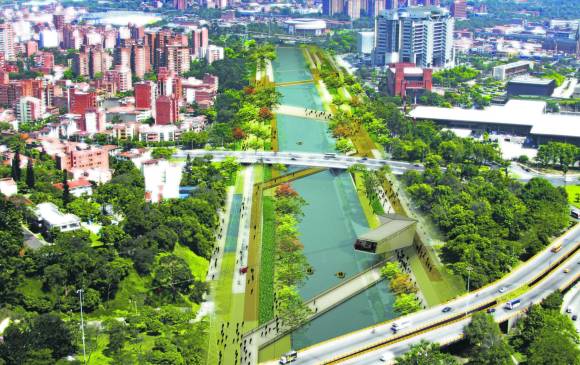The body of water that runs through Medellín, Colombia can be called many things: an open sewer, a barrier, a crime alley or even a highway median strip. Anything but a river.
The city, however, is determined to change that. For years, the city had a reputation as the most violent city in the world . But in the last decade it reinvented itself through innovative urbanism, with projects like cable cars and outdoor escalators credited with successfully overhauling depressed and crime-ridden neighbourhoods. Its new plan, though, is its largest, boldest and – by far – costliest urban intervention yet.
Parks of the Medellín River (Parques del Río Medellín) aims to completely transform the surroundings of the river, turning a highway into a public space and, with luck, sparking urban renewal. More than £1.1bn, 20km of riverbanks and 15 years will be needed to complete this ambitious project.
Medellín, Colombia and Rio de Janeiro, Brazil could soon join Madrid , San Francisco and Seoul in the group of cities that have rethought their disastrously-planned urban highways for the sake of revitalizing their public spaces. The experience of these cities could shed new lights in urban debates worldwide, and help cities decide what to do with their freeways.
These debates often go on for decades. The Gardiner Expressway , a six-lane elevated highway that runs through downtown Toronto and effectively blocks access to much of the Lake Ontario waterfront, requires hundreds of millions of dollars in repairs. There are intelligent proposals to bury it and build a boulevard, but city authorities are reluctant to let go of their highway (one of the most expensive mistakes ever built). Success in Medellín could inspire other cities, such as Toronto , to do what’s necessary.
Note from Storm: I keynoted an event by the Toronto Board of Trade about a decade ago. One of my major points was how undoing the infrastructure planning mistakes of the past has become one of the most reliable urban revitalization strategies. I highlighted the stories of waterfront highway removals in San Francisco and Seattle. Both of those decisions were made easier by earthquake damage to those horribly-misplaced roads. When I brought up the subject of the Gardiner Expressway during the Q&A period, one of the city’s planners asked “So, what are we supposed to do here: pray for an earthquake?” Hopefully, city leaders will bite the bullet and do what’s necessary. It shouldn’t take a sudden disaster to get us to rectify a daily disaster.
[image credit: Parques del Río Medellín]

